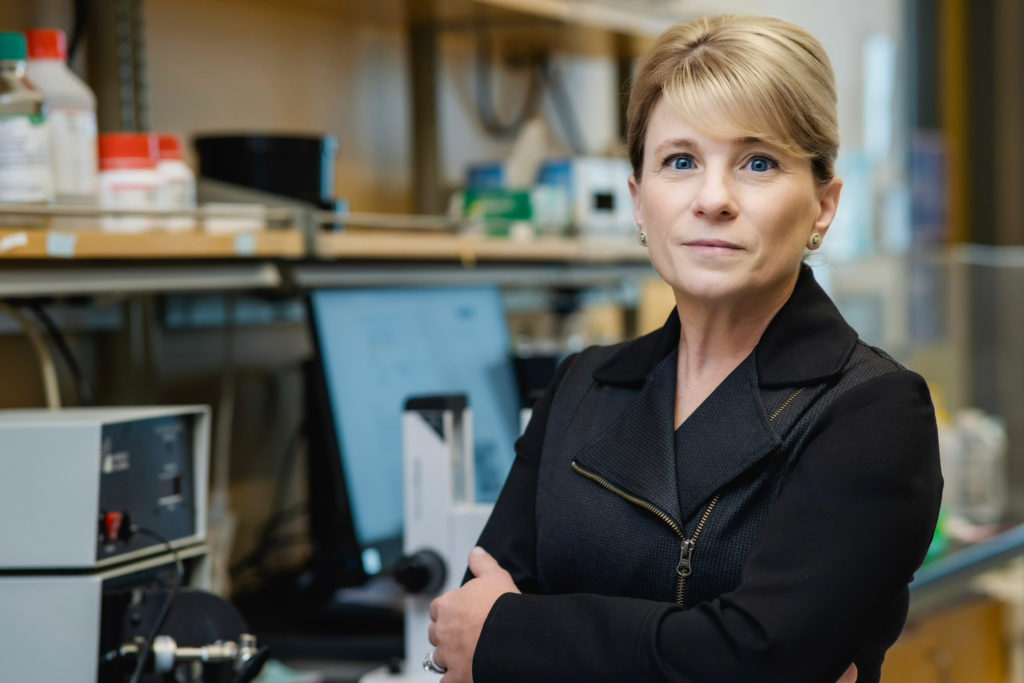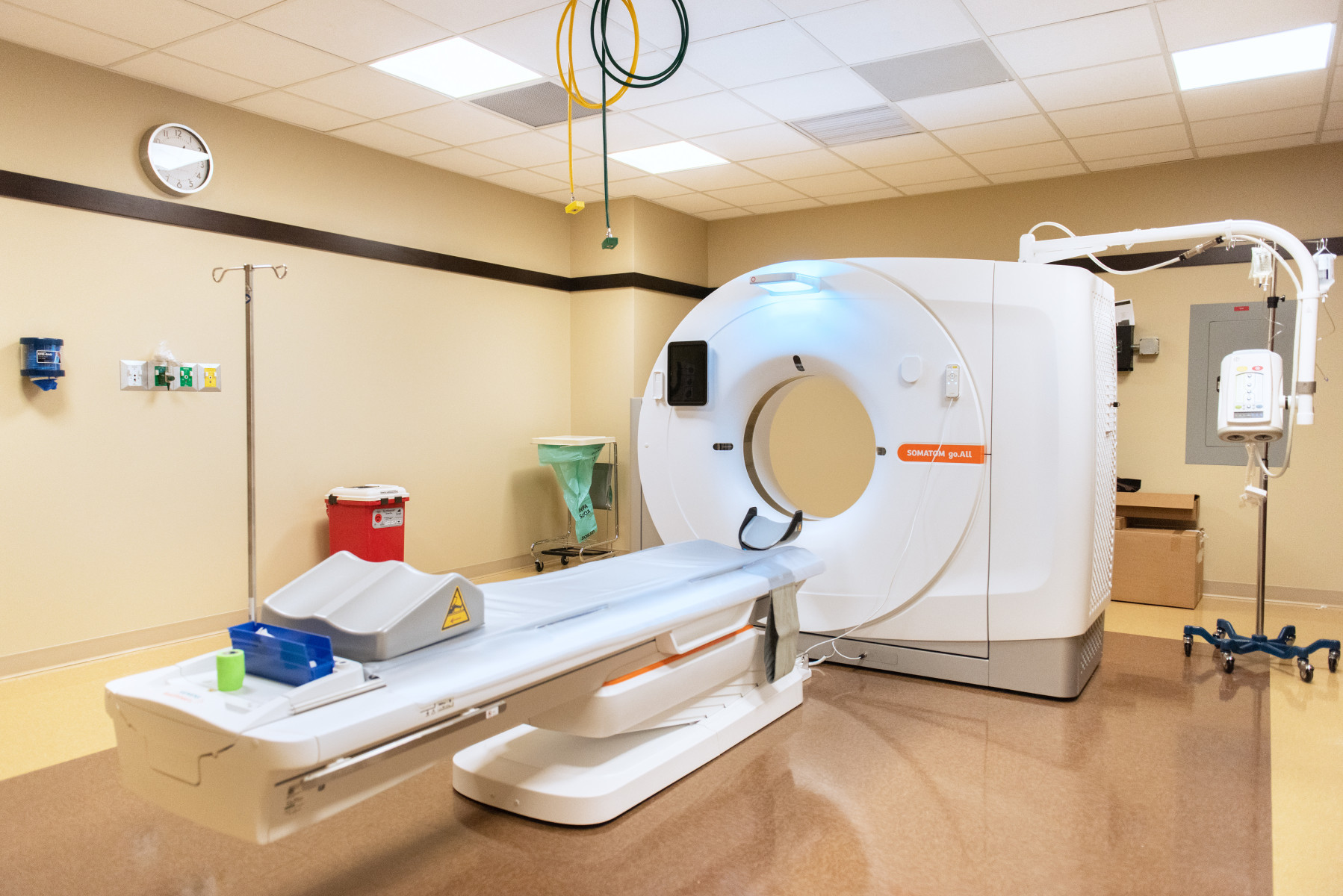Northwestern professor Shana Kelley named president of biomedical science hub

The Chan Zuckerberg Initiative (CZI) has selected Northwestern University to co-lead its new biomedical research hub in Chicago, which will develop new technologies for studying human tissues with unprecedented resolution. The hub’s ultimate goal is to unite the region’s best researchers to improve understanding of inflammation, potentially leading to new treatments for the inflammatory conditions that underlie disease.
Northwestern will co-lead the Chan Zuckerberg Biohub Chicago (CZ Biohub Chicago) with the University of Chicago and the University of Illinois, Urbana-Champaign. Shana O. Kelley, PhD, the Neena Schwartz Professor of Chemistry and Biomedical Engineering, and a professor of Biochemistry and Molecular Genetics at Feinberg, will serve as the hub’s president.
CZI selected the Chicago team from a pool of 58 teams after a yearlong, highly competitive application process for a research initiative explicitly focused on measuring human biology.
“The Chan Zuckerberg Biohub Chicago will assemble some of the best talent from Northwestern, the University of Chicago and the University of Illinois, Urbana-Champaign, signaling a new era of collaboration among the area’s greatest universities,” said Michael Schill, JD, president of Northwestern. “This announcement has been a year in the making and is a testament to the determination and vision of Vice President for Research Milan Mrksich, our Office for Research and our partner universities that dedicated countless hours to seeing this amazing opportunity come to fruition. With Northwestern Professor Shana Kelley as president, I am confident CZ Biohub Chicago will accomplish its scientific goals to gain new insights into inflammation, making inflammation-driven diseases more preventable and treatable.”
“We’re thrilled to be part of the Chan Zuckerberg Biohub Network, which will galvanize multidisciplinary research and drive more progress than any one of these institutions could have achieved on its own,” Kelley said. “The scientific challenge we’re exploring — to develop new tools to better measure tissues and gain insights into inflammation —has large engineering challenges to surmount, and is wildly, but not impossibly, ambitious — and can only be solved by interdisciplinary collaboration.”
The Chicago site is the first expansion of the CZ Biohub Network, which launched in 2021. The Network builds off the successful model of the CZ Biohub in San Francisco, launched in 2016. In a yet-to-be-determined location, the Chicago site will include state-of-the-art laboratories, meeting spaces, faculty in residence, a biofoundry and other sophisticated instrumentation.
“We are excited to scale this successful model of collaborative science into a larger network by welcoming the new Biohub in Chicago,” said CZI Co-Founder and Co-CEO Priscilla Chan. “This institute will embark on science to embed miniaturized sensors into tissues that will allow us to understand how healthy and diseased tissues function in unprecedented detail. This might feel like science fiction today, but we think it’s realistic to achieve huge progress in the next 10 years. I look forward to the advances in science and technology that this new Biohub will spur in studying how tissues function to understand what goes wrong in disease and how to fix it.”
To explore inflammation, CZ Biohub Chicago will develop engineering technologies to make precise, molecular-level measurements of biological processes within human tissues. This work will include embedding thousands of sensors and sampling probes into human tissues. With this technology, scientists will be able to monitor molecular and cellular signals in real time, revealing how disruptions in these processes lead to inflammation and disease. By monitoring tissues in real time, the researchers aim to steer the immune system away from the “tipping points” that lead to inflammatory disorders. The work promises to broadly enable new discoveries across all areas of medicine.
“The CZ Biohub Chicago will become a global destination for performing these types of experiments,” said Milan Mrksich, PhD, Northwestern’s vice president for research, who co-led the Chicago team’s planning committee. “By collaborating across universities, we have assembled an absolute ‘dream team’ of researchers with unmatched scientific skills and talent that enabled us to compete at the highest levels. The hub will be known as a place where discoveries are made and fields are transformed — and it will better position Chicago as an environment for life science translation and entrepreneurship.”
During the application process, Mrksich assembled the multi-institutional team to develop its vision for the hub. Northwestern faculty members on the planning committee included Mrksich, Kelley, Guillermo Ameer, ScD; Horacio Espinosa, PhD; Neil Kelleher, PhD; Michael Jewett, PhD; Amy Paller, MD; and John A. Rogers, PhD. According to Mrksich, the experience strengthened existing cross-institutional relationships and forged new ones, galvanizing the local research ecosystem.
The CZ Biohub Chicago will work with CZI teams, including the science technology team, which aspires to advance biomedical research and develop technologies to understand, observe, measure and analyze any biological process within the human body — across spatial scales and in real time.
“The Chicago Biohub will create technologies that will transform our understanding of tissue-scale biology, revealing important information about the processes that take place in living tissues that could lead to new therapies,” said CZI Co-Founder and Co-CEO Mark Zuckerberg. “This immense scientific challenge requires bringing together researchers and technologists in new ways to accomplish great science that isn’t done in conventional environments. The powerful collaborative model of the San Francisco Biohub has shown us that cross-disciplinary science leads to breakthroughs, and this integrated research model is a key part of how we’ll move towards curing, preventing or managing all disease by the end of the century.”






